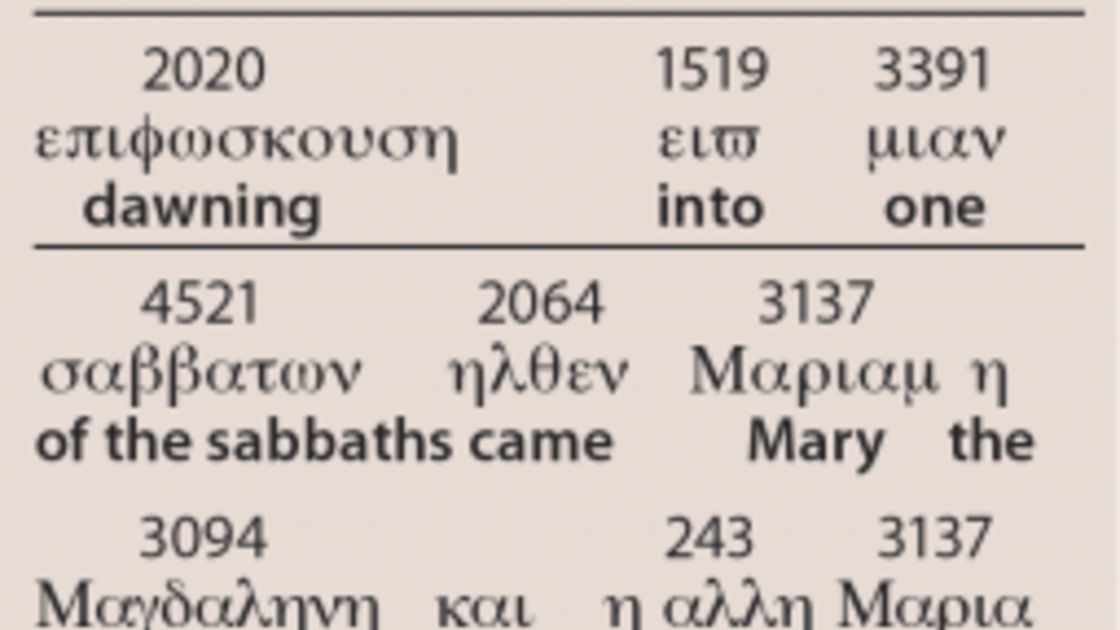Is that three days and three nights?
By just looking at history and the Hebrew calendar, we can see that Christ died on Passover in a.d. 31, which was a Wednesday. But let us not base our beliefs on the writings of men. Historical writings can only be used to supplement God’s inspired Word. Now the Bible does not say emphatically that Christ’s final Passover was in a.d. 31. But we can determine the precise day on which He was crucified, and, when combined with the Hebrew calendar and historical proof, the facts become obvious to those with an open mind.
Jesus was crucified on the Passover (Matthew 26:2). God’s days begin and end at even—when the sun sets (Leviticus 23:32). The day before Passover, the 13th day of the first month, the disciples came and asked Jesus where they should prepare the Passover (Matthew 26:17). (Notice, it was not a question of if they should observe the Passover, but where they should observe it. The disciples observed it, just as Christ did, throughout His ministry.) Christ told them where to prepare it; and that night, when the 14th began, Christ observed His final Passover with the disciples—the night on which He changed the symbols, showing that He was now that Passover sacrifice (verses 26-28).
After that Passover service, they went out into the Mount of Olives (verse 30). Christ spent most of the night praying while His disciples slept (verses 36-45). Early that morning (approaching thedaylight portion of the 14th), Judas came with the multitude to apprehend Christ (verses 47-50). The crucifixion occurred that day, still on the 14th.
At the “ninth hour” of the 14th, Jesus cried out (Matthew 27:46-50; Mark 15:34-37; Luke 23:44-46). The ninth hour, according to the daylight portion of a Jewish day, is 3 o’clock in the afternoon.
Now remember, the Passover was followed by the first day of Unleavened Bread (Numbers 28:16-17). The weekly Sabbath, as most people know, is on Saturday. But the first day of Unleavened Bread was the first of seven annual holy days, or annual sabbaths, instituted by God. Since most people do not observe God’s holy days today, they do not know that these days are also referred to as sabbaths in Scripture (see Leviticus 16:31; 23:24, 26-32, 39). In a.d. 31, this annual holy day, or sabbath, fell on a Thursday.
Christ’s enemies did not want to take Him on this feast day because they knew there would be an uproar among the people (Mark 14:1-2). So they apprehended Him the night of the 14th and hastily began the crucifixion during the daylight portion of the 14th.
Now follow this course of events closely. In John 19:30, Jesus bowed His head and said, “It is finished.” Notice the very next verse: “The Jews therefore, because it was the preparation, that the bodies should not remain upon the cross on the sabbath day, (for that sabbath day was an high day,) besought Pilate that their legs might be broken, and that they might be taken away” (verse 31). Here is where so many scholars are misled. They assume that because the day Christ died is referred to as “the preparation” prior to “the sabbath” (Matthew 27:62; Mark 15:42; Luke 23:54) that it must have been a Friday before the weekly Sabbath. But as John points out, the preparation day was actually before a sabbath that was a high day, or annual holy day.
Verses 32-42 of John 19 then explain the course of events from Christ’s death to His eventual burial. Notice especially verse 42: “There laid they Jesus therefore because of the Jews’ preparation day; for the sepulchre was nigh at hand.” They buried Him late that afternoon, before sunset, because, according to Jewish customs, all dead bodies had to be buried before the Sabbath, whether weekly or annual. So Christ died on the afternoon of the 14th at 3 p.m. He was buried later that afternoon before sunset. From that point, all we have to do is count three days and three nights to know when He was resurrected.
But first, let us go back to the Gospel account in Matthew to continue following the course of events.
Two Sabbaths
“Now the next day [after the Passover], that followed the day of the preparation, the chief priests and Pharisees came together unto Pilate, Saying, Sir, we remember that that deceiver said, while he was yet alive, after three days I will rise again” (Matthew 27:62-63). Even these deceived Jews knew what Christ said! AFTER three days and three nights—not one day and two nights—“I will rise again”!


No comments:
Post a Comment